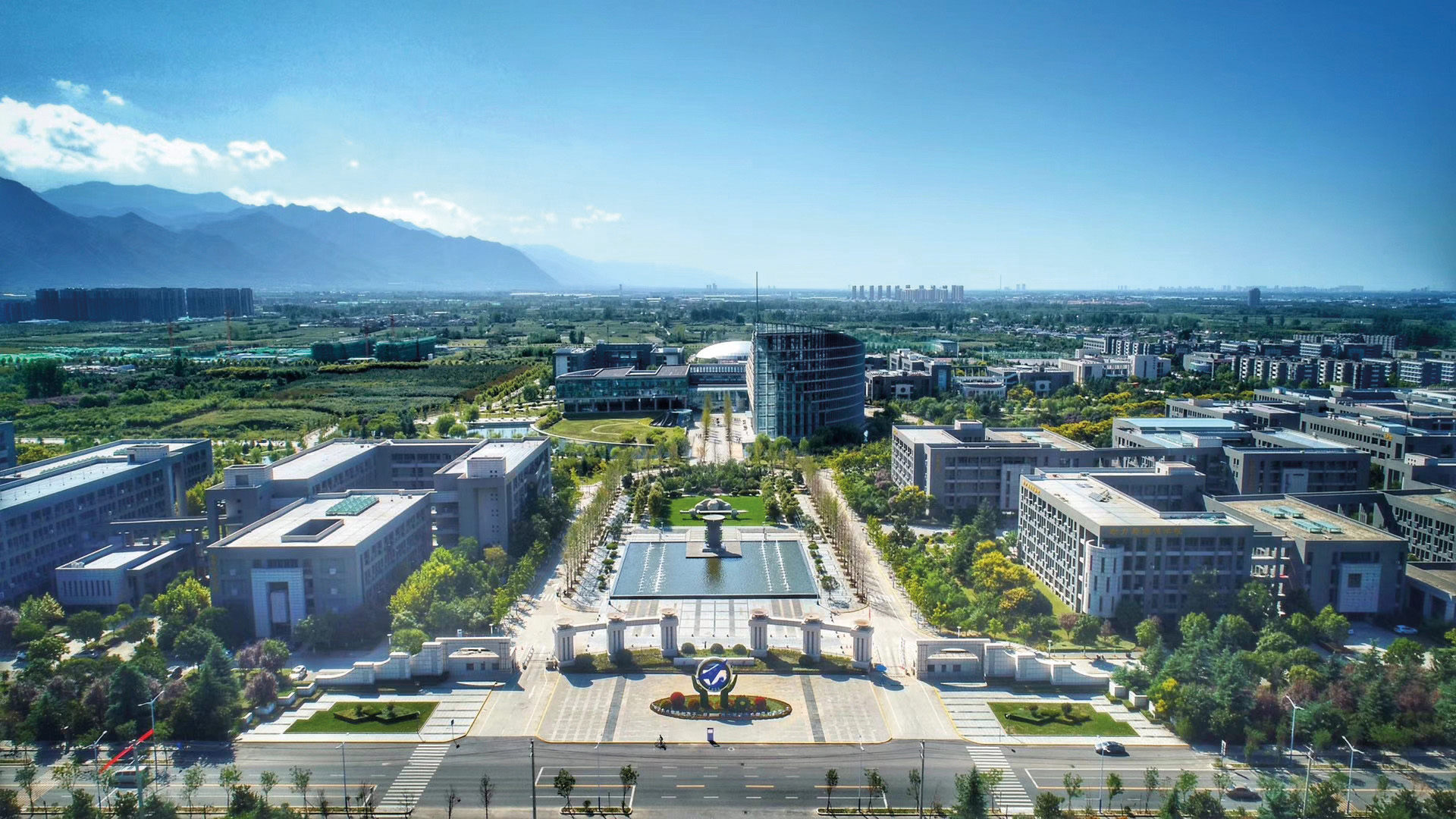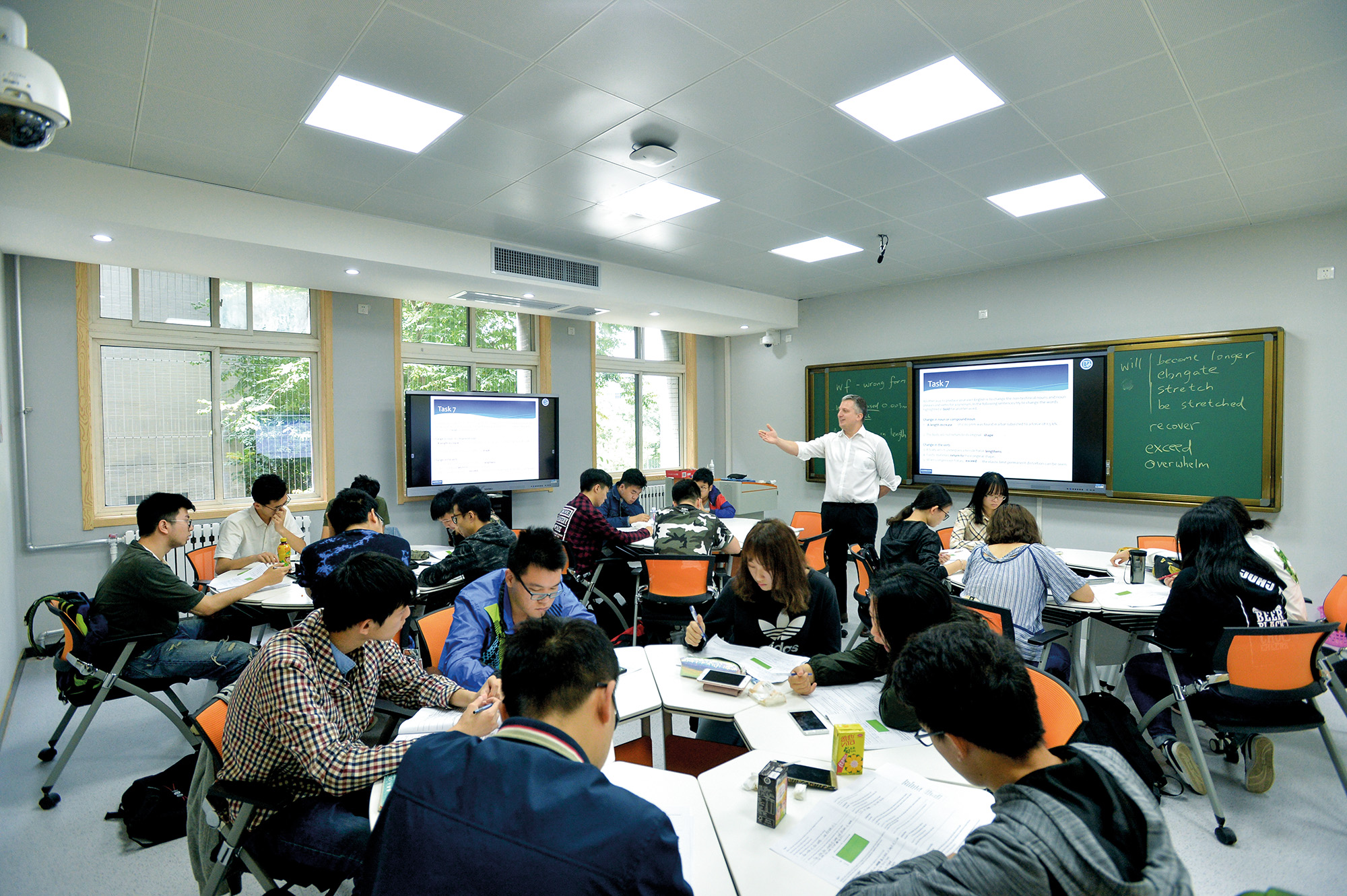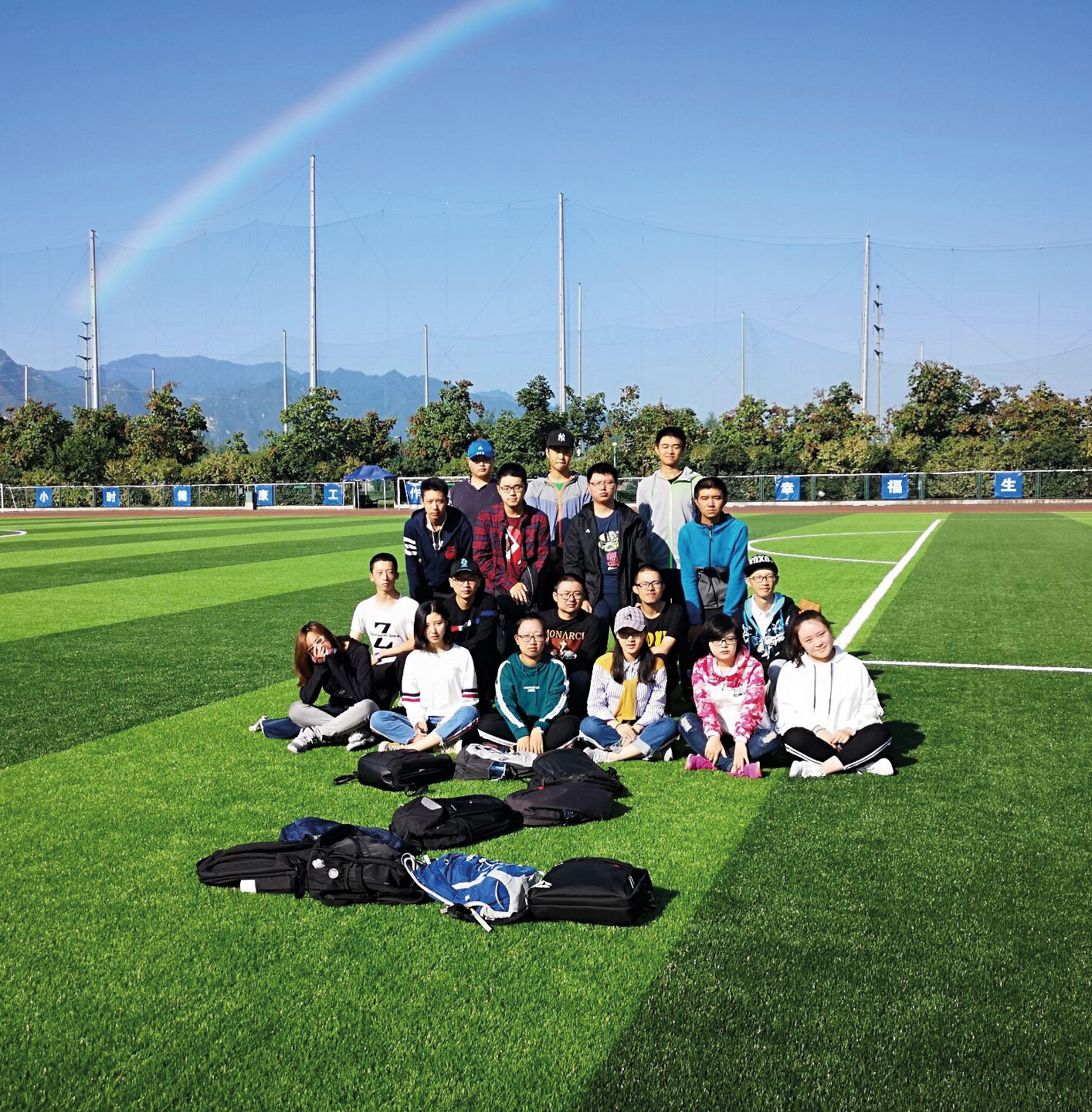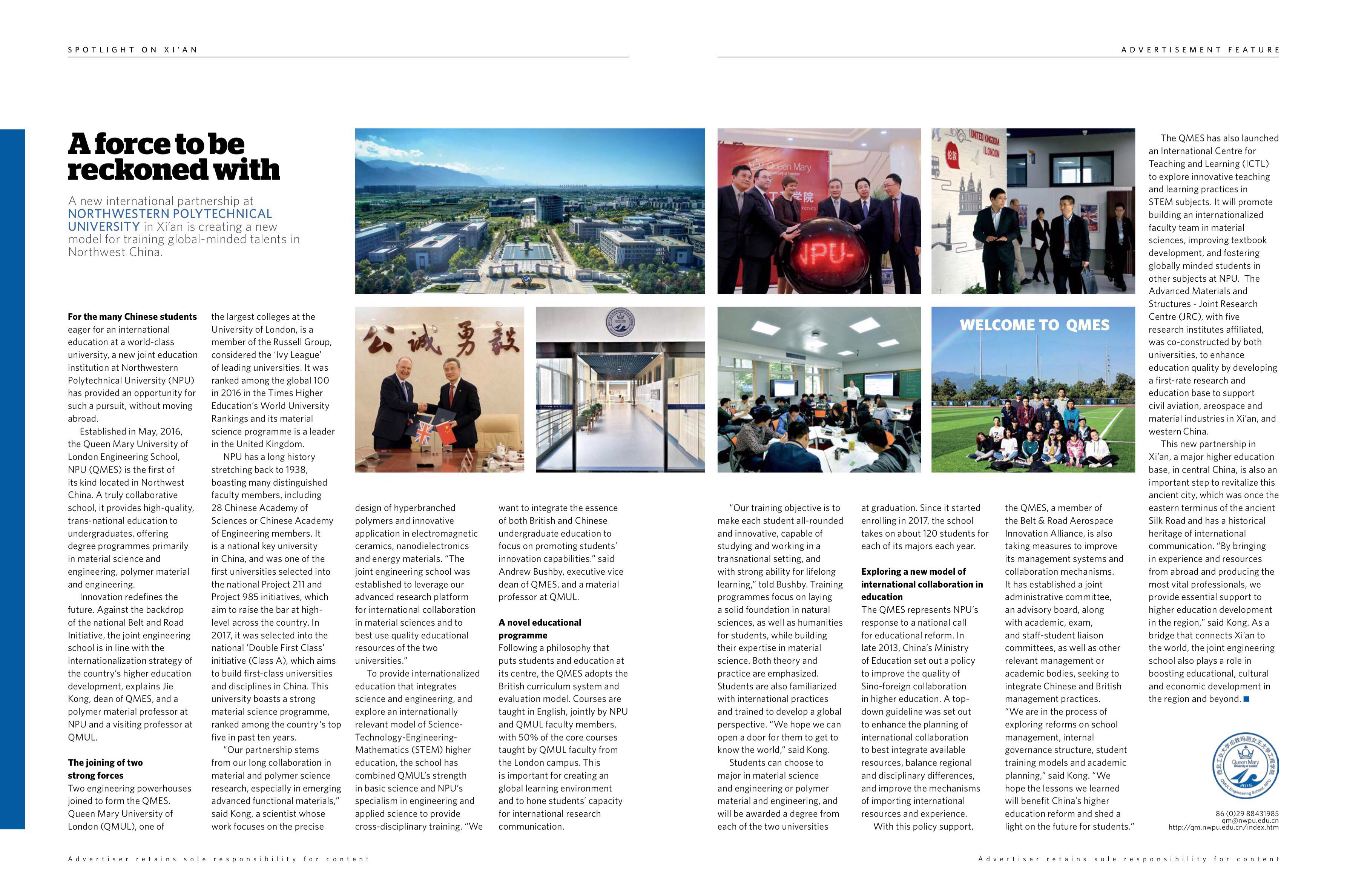A force to be reckoned with --- Nature focuses on Queen Mary University of London Engineering School, NPU
 For the many Chinese students eager for an international education at a world-class university, a new joint education institution at Northwestern Polytechnical University (NPU) has provided an opportunity for such a pursuit, without moving abroad.
For the many Chinese students eager for an international education at a world-class university, a new joint education institution at Northwestern Polytechnical University (NPU) has provided an opportunity for such a pursuit, without moving abroad.
Established in May, 2016, the Queen Mary University of London Engineering School, NPU (QMES) is the first of its kind located in Northwest China. A truly collaborative school, it provides high-quality, trans-national education to undergraduates, offering degree programmes primarily in material science and engineering, polymer material and engineering.
Innovation redefines the future. Against the backdrop of the national Belt and Road Initiative, the joint engineering school is in line with the internationalization strategy of the country’s higher education development, explains Jie Kong, dean of QMES, and a polymer material professor at NPU and a visiting professor at QMUL.

The joining of two strong forces
Two engineering powerhouses joined to form the QMES. Queen Mary University of London (QMUL), one of the largest colleges at the University of London, is a member of the Russell Group, considered the ‘Ivy League’ of leading universities. It was ranked among the global 100 in 2016 in the Times Higher Education’s World University Rankings and its material science programme is a leader in the United Kingdom.
NPU has a long history stretching back to 1938, boasting many distinguished faculty members, including 28 Chinese Academy of Sciences or Chinese Academy of Engineering members. It is a national key university in China, and was one of the first universities selected into the national Project 211 and Project 985initiatives, which aim to raise the bar at high-level across the country. In 2017, it was selected into the national ‘Double First Class’ initiative (Class A), which aims to build first-class universities and disciplines in China. This university boasts a strong material science programme, ranked among the country’s top five in past ten years.
“Our partnership stems from our long collaboration in material and polymer science research, especially in emerging advanced functional materials,” said Kong, a scientist whose work focuses on the precise design of hyperbranched polymers and innovative application in electromagnetic ceramics, nanodielectronics and energy materials. “The joint engineering school was established to leverage our advanced research platform for international collaboration in material sciences and to best use quality educational resources of the two universities.”
To provide internationalized education that integrates science and engineering, and explore an internationally relevant model of Science-Technology-Engineering-Mathematics (STEM) higher education, the school has combined QMUL’s strength in basic science and NPU’s specialism in engineering and applied science to provide cross-disciplinary training. “We want to integrate the essence of both British and Chinese undergraduate education to focus on promoting students’ innovation capabilities.” said Andrew Bushby, executive vice dean of QMES, and a material professor at QMUL.
A novel educational programme
Following a philosophy that puts students and education at its centre, the QMES adopts the British curriculum system and evaluation model. Courses are taught in English, jointly by NPU and QMUL faculty members, with 50% of the core courses taught by QMUL faculty from the London campus. This is important for creating an global learning environment and to hone students’ capacity for international research communication.
“Our training objective is to make each student all-rounded and innovative, capable of studying and working in a transnational setting, and with strong ability for lifelong learning,” told Bushby. Training programmes focus on laying a solid foundation in natural sciences, as well as humanities for students, while building their expertise in material science.Both theory and practice are emphasized. Students are also familiarized with international practices and trained to develop a global perspective. “We hope we can open a door for them to get to know the world,” said Kong.
Students can choose to major in material science and engineering or polymer material and engineering, and will be awarded a degree from each of the two universities at graduation. Since it started enrolling in 2017, the school takes on about 120 students for each of its majors each year.


Exploring a new model of international collaboration in education
The QMES represents NPU’s response to a national call for educational reform. In late 2013, China’s Ministry of Education set out a policy to improve the quality of Sino-foreign collaboration in higher education. A top-down guideline was set out to enhance the planning of international collaboration to best integrate available resources, balance regional and disciplinary differences, and improve the mechanisms of importing international resources and experience.
With this policy support, the QMES, a member of the Belt & Road Aerospace Innovation Alliance, is also taking measures to improve its management systems and collaboration mechanisms. It has established a joint administrative committee, an advisory board, along with academic, exam, and staff-student liaison committees, as well as other relevant management or academic bodies, seeking to integrate Chinese and British management practices. “We are in the process of exploring reforms on school management, internal governance structure, student training models and academic planning,” said Kong. “We hope the lessons we learned will benefit China’s higher education reform and shed a light on the future for students.”
The QMES has also launched an International Centre for Teaching and Learning (ICTL) to explore innovative teaching and learning practices in STEM subjects. It will promote building an internationalized faculty team in material sciences, improving textbook development, and fostering globally minded students in other subjects at NPU. The Advanced Materials and Structures - Joint Research Centre (JRC), with five research institutes affiliated, was co-constructed by both universities, to enhance education quality by developing a first-rate research and education base to support civil aviation, aerospace and material industries in Xi’an, and western China.
This new partnership in Xi’an, a major higher education base, in central China, is also an important step to revitalize this ancient city, which was once the eastern terminus of the ancient Silk Road and has a historical heritage of international communication. “By bringing in experience and resources from abroad and producing the most vital professionals, we provide essential support to higher education development in the region,” said Kong. As a bridge that connects Xi’an to the world, the joint engineering school also plays a role in boosting educational, cultural and economic development in the region and beyond.


